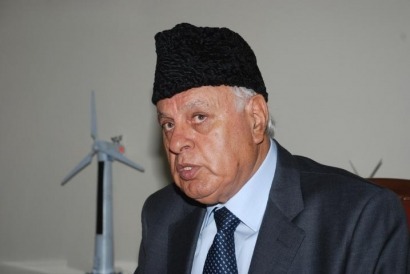
Abdullah made his comments during an interview with the Arabic Gulf News newspaper while attending the World Future Energy Summit in Abu Dhabi.
Currently, he says, renewables account for about 11 percent of India’s total power generation capacity, the result of the nation adding over 11 GW of capacity over the last five years. Abdullah went on to say that the plans currently in the works call for the installation of another 30 GW of capacity in the next five years.
During a lengthy conversation with Gulf News Business Editor Saifur Rahman, Abdullah said one of the world’s most pressing issues today is the need to meet increasingly large energy demands while minising the damage to the environment.
“This is why, while striving to bridge its energy deficit, the world must necessarily increase the share of clean, sustainable, new and renewable energy sources,” he said, adding, “I am confident that renewable energy is an idea whose time has come.
“There is a shift from the use of conventional energy to renewable sources of energy. While 10 years may be an ambitious timeframe for a total transformation, the role of renewables will continue to increase,” Abdullah said.
According to the United Nations Environment Programmeme, new investment in renewable energy for the Middle East and Africa region in 2010 grew 104 per cent to $5 billion. The report said that though the potential for renewable energy in the Middle East is clear, the key challenges are the high costs and the lack of legislation.
India is among the few countries in the world to have an exclusive ministry devoted to the growth and development of renewable energies.
“We stand among the top five countries of the world in terms of renewable energy capacity,” Abdullah said. “We have an installed base of over 22 GW, which is around 11 per cent of our total power generation capacity and contributes over 5 per cent in the electricity mix. This represents an almost 400 per cent increase in the past 5 years alone.
“Our most recent initiative — The Jawaharlal Nehru National Solar Mission (JNNSM) envisages a capacity addition of 20,000 MW of grid solar power by 2022. A similar ambitious mission — the National Bio-Energy Mission — aims to tap the over 15 GW bio-energy potential in the country,” he told Rahman.
Asked where he sees renewables being an easy replacement for traditional, hydrocarbon-based sources of power, Abdullah pointed out that that the sector has already created its space in grid-connected power generation.
“Wind and small hydro are commercially viable options. We are working towards grid-parity in solar,” he said. “However, what is most amazing is the capacity of decentralised renewable applications to usher in energy access for all including the most disadvantaged and the remotest of our habitations. Thus, it becomes one the biggest drivers of inclusive growth.”
Speaking of potential hurdles in the growth of renewables in India, Abdullah said the biggest challenge is to reduce the per-unit cost of renewable energy.
“There are also other challenges like those related to technology and financing. Like many other countries, India is meeting these challenges through encouraging economies of scale, easy transfer of technology and indigenous research and development,” he said.
“I see the role of governments as active facilitators who will work to create an enabling ecosystem for promoting newer business models, technical, as well as market innovations as well as promoting basic and applied research,” Abdullah continued. “India has an established presence in R&D [research and development] in industries such as ICT [information and communication technology]. We see technology-led R&D as a strong area for innovation and growth. For instance, it will help in managing the complexity of variable power generation through computer-enabled power networks, or smart grids. The efficiencies of smart grid management coupled with the sustainability of renewable energy could be a win-win combination.”
For additional information:

